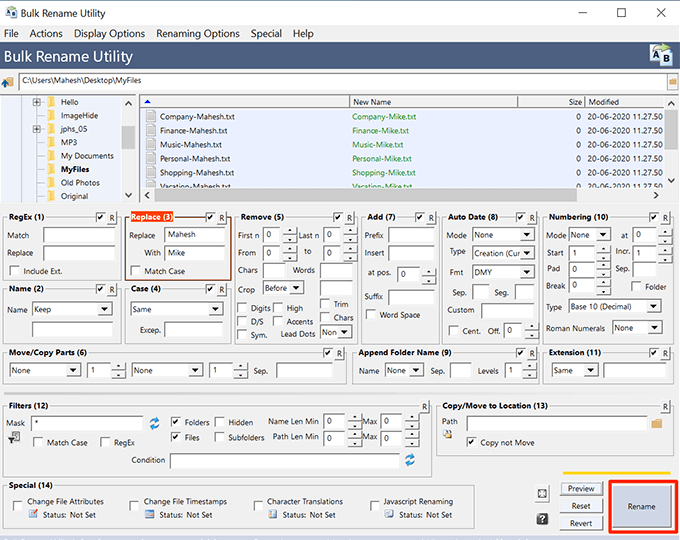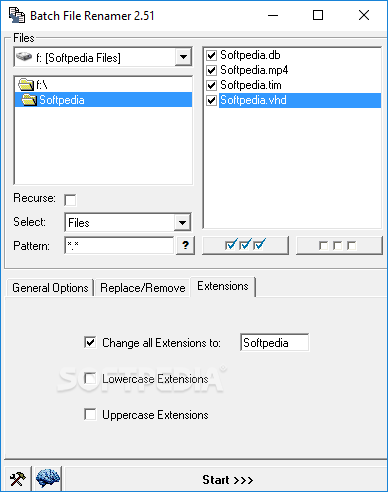

- #Batch file renamer windows 8.1 how to#
- #Batch file renamer windows 8.1 install#
- #Batch file renamer windows 8.1 windows 10#
Drag and drop files and folders from Explorer to FocusOn Renamer's interface to add them to the queue. There are two more methods for adding content that neither the website nor the help page mention. Select the files and directories that you want to rename by using the Add Files and Folders buttons theseare displayed in the pane when you add them. If ((Get-Module 's start with the file list pane which takes up the lower half of the window. #Install PowerShell SDK for Microsoft Intune Graph API
Invoke the Graph API request with the configured variables. Set the required variables for the request URL and the request payload. Connect with the Graph API, which will prompt the administrator for credentials. #Batch file renamer windows 8.1 install#
Install the PowerShell SDK for Microsoft Intune Graph API (if it’s not installed). That example is shown below and basically performs the following actions: I’m going to provide a really simple example that would still require administrator interaction, but does show how it can be achieved. Rename Windows devices using PowerShell and the Microsoft Graph APIĪfter verifying the request URL and the request payload, the last step toward automating this Bulk action is putting it all together in a PowerShell script. It’s good to specifically point out that the deviceIds property is an array that can currently contain up to a 100 devices and that the deviceName property should contain the naming format for the different applicable devices. The good thing is that these properties are pretty self explanatory, especially in combination with the action that was performed to retrieve this information. A closer look at that JSON payload shows the properties action, actionName, deviceIds, deviceName, platform, realAction and restartNow. That request requires a request body to supply a JSON representation of the different properties. That combination is needed for automation purposes.Ī closer look shows that the executeAction action is used as the request location to post the request. The most relevant parts of that action are shown below, as Figure 2 shows the request URL and Figure 3 shows the request payload. When following the Bulk action via the Network trace in the Developer tools, it shows the executeActionaction that will perform the actual action. Verify request information using the Microsoft Graph Explorer On the Review + create page, review the provided information and click Create. On the Devices page, click Select devices to include to select the devices to rename and click Next. Enter new name: Provide a new naming conform the provided guidelines. On the Basics page, provide the following information (see Figure 1) and click Next. Open the Microsoft Endpoint Manager admin center portal and navigate to Devices > All devices > Bulk Device Actions to open the Bulk device actions blade. While performing these steps make sure to use Microsoft Edge and to turn on the Developer tools (Ctrl + Shift + I), as that will help with identifying the Graph request that should be used for automation purposes. #Batch file renamer windows 8.1 windows 10#
The following 9 steps walk through the Bulk action for renaming Windows 10 devices.

This method is – in my opinion – always the first step towards automating an action.

Now let’s start by having a look at using a Bulk action for renaming a Windows 10 device by using the Microsoft Endpoint Manager admin center. Rename Windows devices using the Microsoft Endpoint Manager admin center

I’ll end this post by showing an example using PowerShell and the Microsoft Graph API.
#Batch file renamer windows 8.1 how to#
In this post I’ll show how to perform this action by using the Microsoft Endpoint Manager admin center, followed by using the Microsoft Graph Explorer. That Bulk action is also available as a single action on a device and is currently not available for hybrid Azure Active Directory joined devices, nor available for co-managed devices. Those Bulk actions include the action to rename Windows 10 devices in bulk. This time it’s about using the recently introduced functionality to perform Bulk actions on devices. This week is a follow-up on that post, as it will also be about renaming Windows devices. A few months ago, I did a blog post about the different ways of renaming Windows 10 devices.








 0 kommentar(er)
0 kommentar(er)
